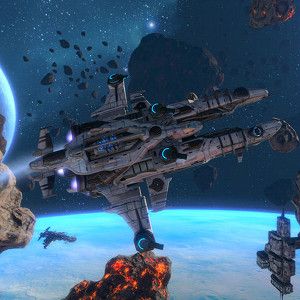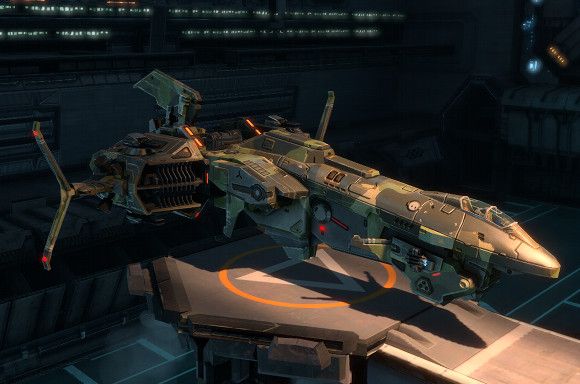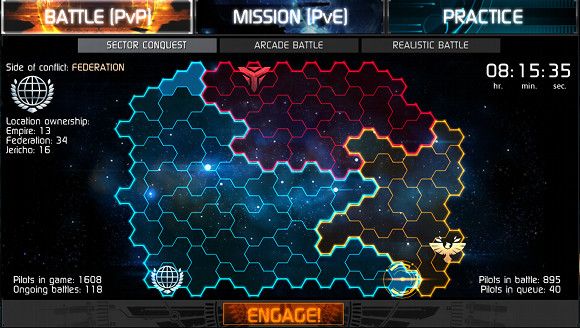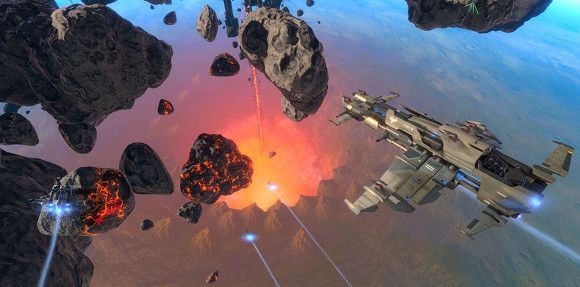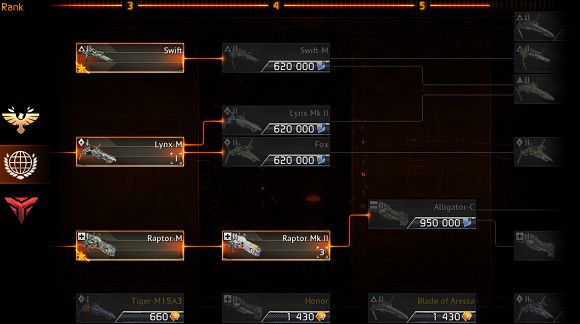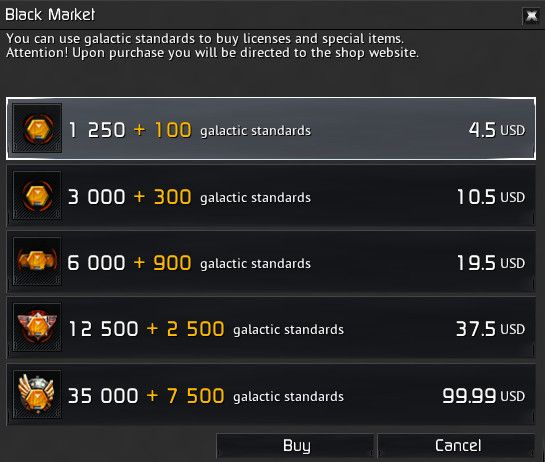Free-to-play games have served most genres well. Role-playing, strategy, and first-person shooters are represented by numerous offerings that don’t cost a dime.
But what about space shooters? If Star Trek Online is excluded (and it should be, as it’s an RPG), the only sensible choice is Moon Breakers, a browser-based space simulation game. All of the genre’s best titles are paid. Most don’t even offer multiplayer or, if they do, the community has been dead for years.
There is a new kid on the block, however. His name is Star Conflict. And he makes everyone else look a bit old-fashioned.
The Basics
I can’t honestly say that I know Star Conflict’s background story. Some spaceships, some wars, blah blah, magic radio signals. You can read the story on the game’s website, but none of it comes up in-game, and the writing is rather cheesy. For example, the ruins of a powerful ancient civilization were first discovered in sector 1337. Seriously!
Star Conflict is a 100% multi-player game, even when played in co-op PvE, and there are no story missions. The three factions players can contract with (you play as a mercenary), serve only to enable PvP and inspire the game’s starship porn. You’ll never pilot anything larger than a frigate, but every ship looks awesome. Homeworld fans should check this game out just for the art.
Competitive PvP, which is clearly the game’s focus, can be played in Sector Conquest, Arcade Mode and Realistic Mode. Sector Conquest is the most popular and allows players to fight over territories, though the benefits of doing so aren’t clear. Arcade Mode is a non-territory fight that turns on unlimited respawn. Realistic Mode is the same, but players can only spawn once with each ship they own.
Matchmaking is quick and uses some magic to throw players with equivalently powerful ships (there are many upgrades, as I’ll discuss when I talk about the business model) together. However, this doesn’t always seem to work, which is likely because the community isn’t huge. The upside is short queue times; you’ll rarely have to wait more than a minute to play. Matches are short, too, which makes Star Conflict a great space simulation game to play if you only have thirty minutes to kill.
The other two game modes are PvE and Practice. Fighting the AI in co-op can provide some decent rewards, and there’s a challenge to it, but not much variety. Practice is exactly that; it exists only to help players try out different ship configurations.
Gameplay
http://youtu.be/HcqMZinPJ7U?t=9m22s
Star Conflict is a game about starship combat, so it’s important that the flight model be right. And I have good news; it’s perfect.
Note that “perfect” does not mean “realistic.” There is some sense of momentum here but, for the most part, ships fly like they’re moving through gelatinous ether than real space. And that’s good; it makes for a more intuitive game that’s less likely to induce motion sickness. You don’t have to buy a joystick, either, as the keyboard/mouse controls are wonderful.
Space can be a boring battlefield because it’s mostly empty, so Star Conflict once again kicks realism to the curb. All of the maps are full of clutter like asteroids, space-stations and dying stars. These aren’t just window-dressing, either, because most weapons can hit targets 2 to 5 kilometers away and sensors are omniscient unless line-of-sight is blocked. You’ll have to use debris for cover.
The cluttered maps also let the developers implement many types of ships. If the maps were empty, the game’s frigates which carry the most weapons with the longest range, would dominate. But clutter creates a game of cat-and-mouse between slow frigates, lumbering along on the hunt for prey, and nimble interceptors that can ambush them from between asteroids. There’s also a host of ships in-between with many unique abilities like cloak, warp gates, healing modules and more.
All of this comes together to create a game with great tactical depth, which is unusual. Most games in this genre end with the best dog-fighter taking home the crown, but there’s plenty of room in Star Conflict for players who want to take a more deliberate approach or just want to hang back and buff allies.
The Free-To-Play Model
Star Conflict calls itself an MMO, but in reality it’s a persistent competitive game similar to World of Tanks. There are no open-world areas and you warp straight to battles, so there’s little room to make money from cosmetic or convenience items. Most of what you’ll buy relates to combat.
That makes pay-to-win a concern. Fortunately, the developers have tiered matchmaking, which means brand new players aren’t thrown into a grinder against opponents with more experience and vastly superior ships. Your first matches will be against other free players or paying players who are approaching the game casually.
With that said, pay-to-win does rear its ugly head eventually. The problem is the experience curve. There are ways to advance beyond ship upgrades and, if you don’t pay, you’ll gradually fall behind. You’ll probably be eight to ten hours into the game when you reach that point, however.
The good news is that prices are reasonable. A one-month license, which boosts your income and experience across the board, is about $9. You can also buy other licenses that last from one day to one year. As you’d expect, longer licenses are a better value.
Ships and weapons are the money sink in this space simulation game, as prices range from about $2.50 to $10 or more for a ship (you can’t see the highest-tier ships till you get there. and each faction has its own progression, so I’m not sure of their prices) and $2 to $5 for weapons. Dropping $25 for a ship is possible. But I’m also not sure why you would; paid weapons/modules are usually only 5% better than free versions (or less), and paid ships aren’t far superior, either. The paid upgrades seem geared towards people who have money to burn or want to stand out from the rabble.
Conclusion
Anyone who enjoys space shooters should download Star Conflict immediately. Heck, anyone interested in shooters of any breed should check it out. The developers managed to turn a genre based on dog-fighting into a team-based tactical game.
My only concern with the game is longevity. There are only a few play modes, just a handful of maps, and PvE is not as deep as the PvP game. For this reason I don’t recommend spending money on paid ships just yet, but the game is certainly worth the download time and, should you still like it after the first hour, I recommend plunking down nine bucks for the one-month license (or $4.50 for the one-week license, if you’re skeptical).

